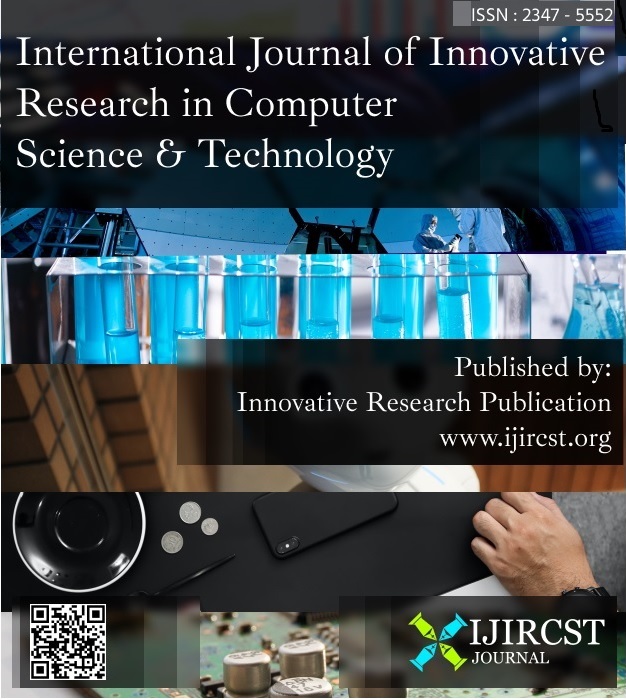An Overview Benefits and Risk of Smart Healthcare Application Using Internet of Things
Keywords:
Healthcare Benefits, Healthcare, IOT, Smart Service, Smart HealthcareAbstract
An Internet of Things (IoT) enables devices to gather and share data directly with one another and along with clouds, enabling for faster and more effective data collecting, recording, as well as analysis. This opens up a world of possibilities in a range of industries, including such autonomous cars that recognize wear and tear as well as schedule repairs, or trains that dynamically calculate and broadcast anticipated arrival times to waiting passengers. Nowhere is the Internet of Things more promising than in health, in which its concepts are already being applied to improve access to treatment, improve quality, as well as, most importantly, reduce costs. The use of different technologies, such as information technology (IT), to complement and improve current healthcare services has been the subject of much study. The Internet of Things (IoT) has indeed been widely utilized to connect current medical resources as well as provide reliable, effective, and intelligent treatment to the aged and chronically ill. Recognizing the benefits and drawbacks of any innovation is critical to its successful implementation. This article presents a descriptive assessment of the Smart Healthcare Platform's benefits and drawbacks. The smart healthcare platform's history is also discussed.
Downloads
References
C. Chibelushi, “An Overview and Concerns on IoT in Healthcare Applications ; The Role of AI and Pattern Recognition,” Int. J. Inf. Commun. Technol. Trends, 2014.
J. A. Laub, “Assessing the servant organization; Development of the Organizational Leadership Assessment (OLA) model,” Diss. Abstr. Int., 1999.
V. Jain and V. K. Singh, “Influence of healthcare advertising and branding on hospital services,” Pravara Med. Rev., 2019.
T. Suzuki, H. Tanaka, S. Minami, H. Yamada, and T. Miyata, “Wearable wireless vital monitoring technology for smart health care,” 2013, doi: 10.1109/ISMICT.2013.6521687.
N. Trivedi et al., “Pharmacoeconomics: A pivotal role in indian healthcare system (A Review),” Pharma Research. 2014.
P. Wang and L. Jiang, “Task-role-based Access Control Model in Smart Health-care System,” 2015, doi: 10.1051/matecconf/20152201011.
J. Nath, R. Sharma, and S. S. Mahajan, “A study on low dose magnesium sulphate regime for eclampsia in a tertiary care teaching hospital in North India,” Biomed. Pharmacol. J., 2013, doi: 10.13005/bpj/380.
R. Shahid and P. Ahluwalia, “T-piece made from a 10 ml syringe,” Indian Journal of Medical Research. 2020, doi: 10.4103/ijmr.IJMR_1602_19.
S.Sivagami, D.Revathy, and L.Nithyabharathi, “SMART HEALTH CARE SYSTEM IMPLEMENTED USING IoT,” Int. J. Contemp. Res. Comput. Sci. Technol., 2016.
D. Gupta et al., “A randomized controlled clinical trial of Ocimum sanctum and chlorhexidine mouthwash on dental plaque and gingival inflammation,” J. Ayurveda Integr. Med., 2014, doi: 10.4103/0975-9476.131727.
S. Srivastava, P. Singh, K. K. Jha, G. Mishra, S. Srivastava, and R. L. Khosa, “Evaluation of anti-arthritic potential of the methanolic extract of the aerial parts of Costus speciosus,” J. Ayurveda Integr. Med., 2012, doi: 10.4103/0975-9476.104443.
V. K. Singh and F. A. Khan, “A comparative survey of medical disorders in the elderly persons of rural and urban area of north India,” J. Clin. Diagnostic Res., 2012.
C. K. Lee, S. J. Shin, and D. H. Ryu, “A study of Wearable Smart device through smart health-care,” Inf., 2014. [14] T. Kumar and A. Takalkar, “Study of the effects of drinking water naturally contaminated with fluorides on the health of children,” Biomed. Res., 2010.
J. van Hoof, G. Demiris, and E. J. M. Wouters, Handbook of smart homes, health care and well-being. 2016. [16] P. S. Matreja, J. Kaur, and L. Yadav, “Acceptability of the use of crossword puzzles as an assessment method in pharmacology,” J. Adv. Med. Educ. Prof., 2021, doi: 10.30476/jamp.2021.90517.1413.
M. M. Gupta, S. Jankie, S. S. Pancholi, D. Talukdar, P. K. Sahu, and B. Sa, “Asynchronous environment assessment: A pertinent option for medical and allied health profession education during the covid-19 pandemic,” Education Sciences. 2020, doi: 10.3390/educsci10120352.
A. P. Singh, S. Chandak, A. Agarwal, A. Malhotra, A. Jain, and A. A. Khan, “Utility of High-Resolution Sonography for Evaluation of Knee Joint Pathologies as a Screening Tool,” J. Diagnostic Med. Sonogr., 2021, doi: 10.1177/87564793211035773.
P. Tiwari, A. Jaiswal, N. Vishwakarma, and P. Patel, “SMART HEALTH CARE ( AN ANDROID APP TO PREDICT DISEASE ON THE BASIS OF SYMPTOMS ),” Int. Res. J. Eng. Technol., 2017.
S. Goel, A. Malhotra, A. Agarwal, S. Chandak, A. Kumar, and A. Khan, “Comparative Efficacy of Ultrasonography and Acoustic Radiation Force Impulse (ARFI)
Elastography in Prediction of Malignancy in Thyroid Nodules,” J. Diagnostic Med. Sonogr., 2020, doi: 10.1177/8756479320931354.
V. R. Jakkula, D. J. Cook, and G. Jain, “Prediction models for a smart home based health care system,” 2007, doi: 10.1109/AINAW.2007.292.
G. Kaur, V. Gupta, P. Bansal, S. Kumar, R. K. Rawal, and R. G. Singhal, “Isolation of lupenone (18-lupen-3-one) from roscoea purpurea root extract,” Bangladesh J. Med. Sci., 2020, doi: 10.3329/bjms.v19i4.46627.
P. Bhardwaj, D. V. Rai, M. L. Garg, and B. P. Mohanty, “Potential of electrical impedance spectroscopy to differentiate between healthy and osteopenic bone,” Clin. Biomech., 2018, doi: 10.1016/j.clinbiomech.2018.05.014.
P. Yadav, V. Nageshwar, and J. Prabhu, “Reproductive and sexual health knowledge and utilization of services among adolescents: A review based on available literature,” Indian Journal of Public Health Research and Development. 2019, doi: 10.5958/0976-5506.2019.02817.1.
N. Mishra, P. Singhal, and S. Kundu, “Application of IoT products in smart cities of India,” 2020, doi: 10.1109/SMART50582.2020.9337150.
G. Goswami and P. K. Goswami, “Artificial Intelligence based PV-Fed Shunt Active Power Filter for IOT Applications,” 2020, doi: 10.1109/SMART50582.2020.9337063.
P. P. Singh, P. K. Goswami, S. K. Sharma, and G. Goswami, “Frequency reconfigurable multiband antenna for IoT applications in WLAN, Wi-max, and C-band,” Prog. Electromagn. Res. C, 2020, doi: 10.2528/pierc20022503.
